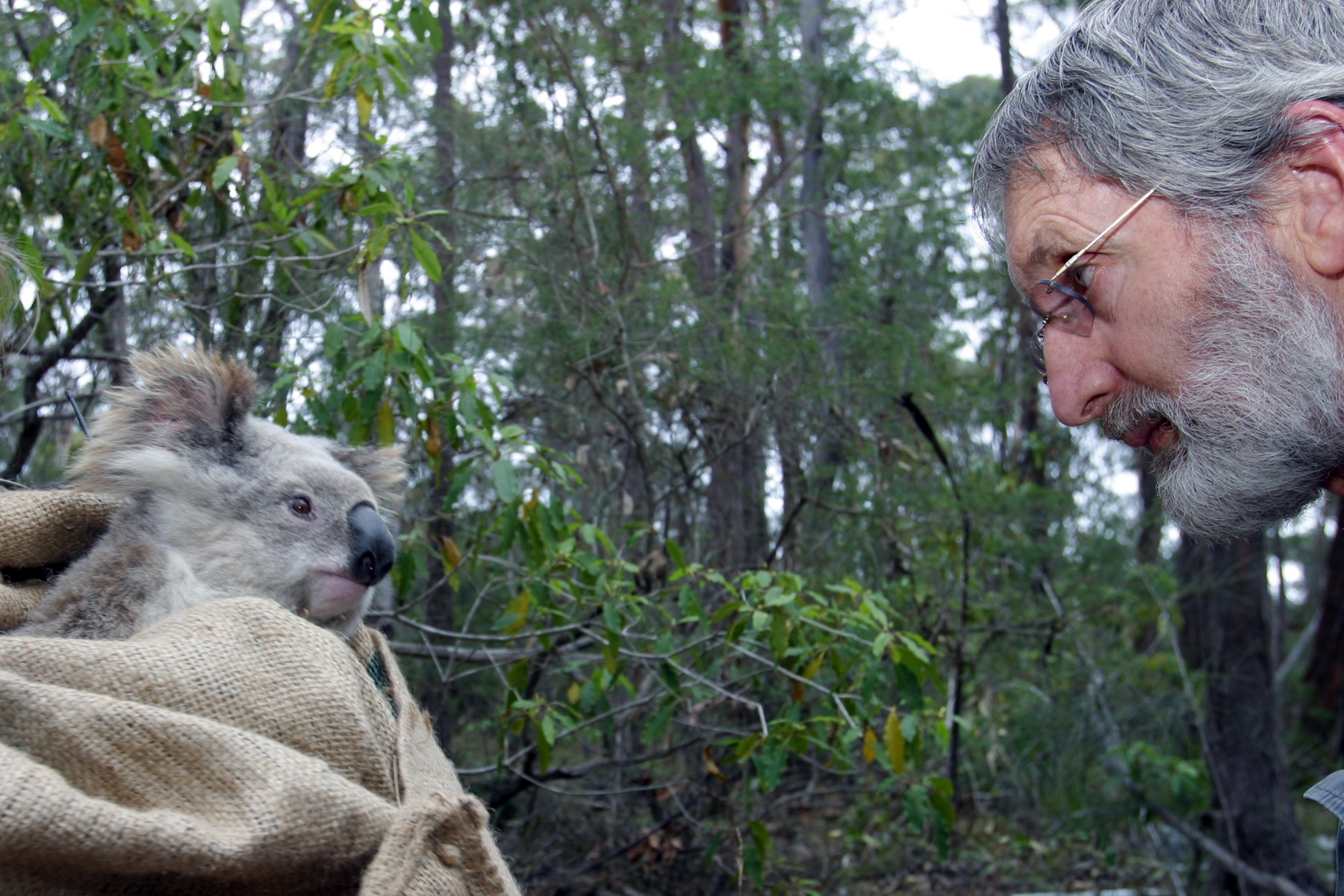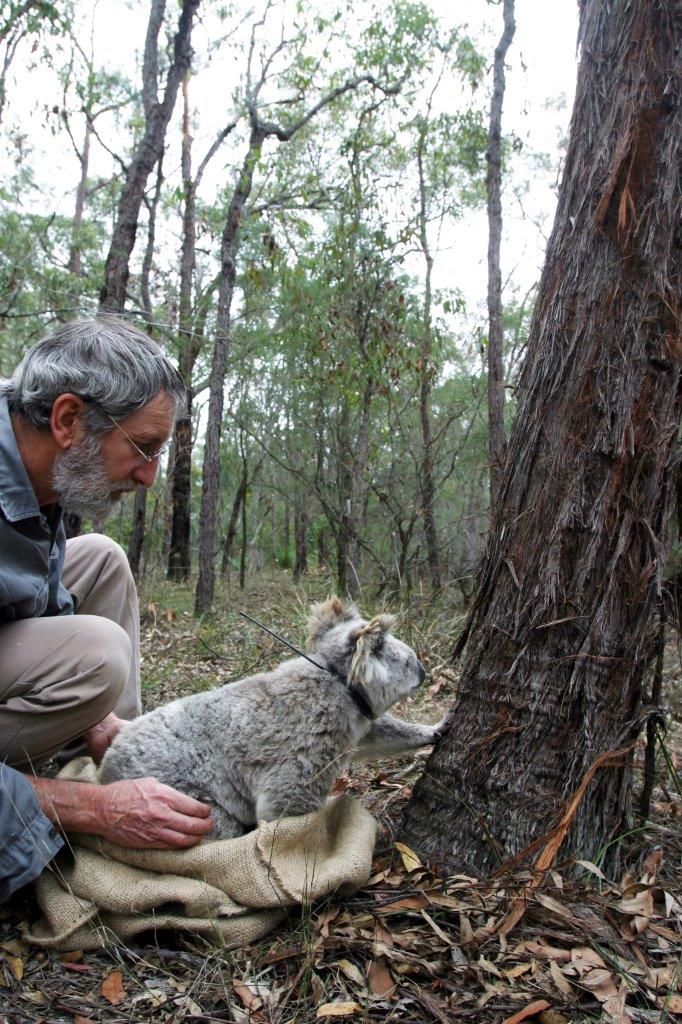Robert Close

CLOSE FOR COMFORT: ROBERT CLOSE
George Madani warmly nominated Rob Close for this feature. George admires Rob, not for his multiple awards as an AMS limericist, but for his humility, his great knowledge, his paramount involvement in Petrogale taxonomy, his mentoring of students, and his conservation work with the community. Indeed Rob has been using successfully for decades what is now known as Citizen Science and touted as a new avenue for research. George says that “Rob is one of our great links to the mammalogists of old.” He studied with Sharman and Lyne, founding members of our Society, who were themselves influenced by TT Flynn (yep, Errol’s dad) and Wood Jones, which makes Rob proper mammalian nobility. However, I have a difficult time putting “Rob” and “old” in the same sentence, since I see a young skin-diving sheep farmer leaving the farm to work on mammalian genetics before guiding tourists in Central and South America, and returning to research, conservation, and teaching. Rob has been modern all his life, and there is nothing age can do about that. If you have not yet had the pleasure, enjoy meeting Rob.
Topa Petit, Membership Officer
Below: Rob and koala stare-down

History
My parents were teachers in Adelaide, but my mother had always wanted to breed sheep. So after my father died young and her father died old after founding a new breed of sheep, the Poll Dorset, she inherited ¼ of her father’s mixed farm on the Gawler Plains and fled the classroom for the farm. Although I was under considerable pressure to take over the farm, I was more interested in skin-diving and so took a zoology degree at Adelaide University. For Honours I used electrophoresis to study the genetics of horn growth in sheep. Protein electrophoresis in 1971 was a new and exciting technique and it led me to Macquarie University, where Geoff Sharman’s group was looking at the inactivation of the paternal X-chromosome in marsupials. I studied bandicoots, which go the whole hog and actually lose a sex-chromosome from some cell lines at different ages in the various species. After completing my PhD, I stayed on at Macquarie to use chromosome morphology and protein electrophoresis to study the taxonomy of bandicoots and rock-wallabies. This involved 5 continuous months in the field searching out all the type localities in Queensland for the several named species. I then went to the Galapagos Islands to attend a short course held by the Charles Darwin Research Station to gain a National Park licence and become a tourist guide. Subsequently I worked on tourist boats for a year before travelling through Central America and northern South America for six months. On return to Australia, I studied reproduction of captive kowaris at the Adelaide Institute of Medical and Veterinary Sciences. From there I returned to Macquarie University to continue studies of speciation, distribution, parasites, hybrid zones and hybrid fertility and taxonomy of rock wallabies and pademelons.
On moving to the University of Western Sydney I became involved in a dispute between developers and conservationists over threats to a population of koalas. Neither party knew much about the biology of this population. Twenty-five years later, I’m still collecting data to add to the 3500 community sightings and the 4000 radio-tracking locations. The original disputed area is now a National Park and we now know that koalas are widespread, healthy and expanding in number.
Interesting projects
The rock wallaby and bandicoot studies were exciting in the field, lab and in captivity, while the koala studies provided the chance to work closely with the community.
Current projects
I’ve officially retired but we still have a number of ear-tagged koalas that the community are spotting and adding to our data-base. I’m also recording sightings of other mammals in the Sydney basin such as platypus and water rat.
Some of your best achievements
Working with Geoff Sharman’s team: there were many fantastic days such as the day when Peter Johnson from QNPWS at Townsville pulled a frozen rock wallaby from his freezer and Gerry Maynes and I realised that the animal was a new species, the Proserpine rock wallaby, Petrogale persephone. My most successful venture, however, was generating (with Steven Ward and a stalwart group of volunteers) the community sighting system which allowed us to study the low density koala population at Campbelltown. Writing a weekly column in the local paper for 20 years was an important part of the process and allowed us to publicise other ecological issues besides the koala study.
Favourite activity in mammalogy
Our field work for the rock wallabies took us into some of the most beautiful, isolated places in Queensland. You can’t beat swimming in granite-banked pools where the blackfish are clearly visible at depths greater than two metres and there’s not another soul for 50 km!
“Mammal anecdote(s)”
When we followed up the origin of the frozen P. persephone (see above), we were directed to the property of a leprechaun of a man who had “found” the original wallaby. He’d thought it was a tree kangaroo because he often saw them in trees. When we asked if he could show us where the animals lived, he asked suspiciously “you’re not National Parks people are you?” When we assured him in the negative, he led us to a covered, A-framed guinea-pig hutch about 3 x 2 x 1 m. Lifting a panel he reached in, felt around and pulled out a wallaby (probably a swamp wallaby) by the tail. “o-oh, wrong one” said he, putting it back in the hutch. He reached in again and this time pulled out, to our great delight, a young female Proserpine rock wallaby. Later he showed us the snare that he’d used to catch her: it was a classic bent sapling device with a flat foot-noose and a trip bar. How the wallaby survived its capture unscathed, I’ve no idea. We persuaded our enterprising host to give her to us and sent her to Macquarie, an adventure which she also survived. Her photograph can be seen in the first edition of Ron Strahan’s “Complete Book of Australian Mammals”.
Advice for people interested in Australasian mammalogy
Utilise the human community as much as possible to help with projects. Local papers are a great source for generating interest, collecting sightings and exposing the community to their local fauna and the value of biological studies.
Post a comment
You must log in or register to post comments.
If you are visiting this form to renew your membership enter your email address and password below.
Click on the forgotten password option if you are not sure of your password.

